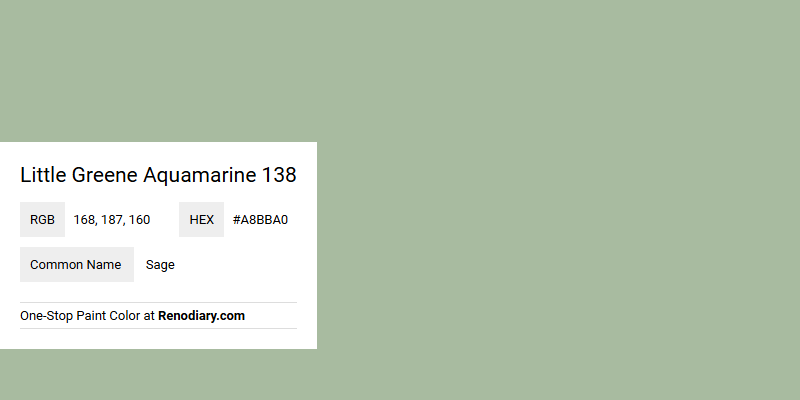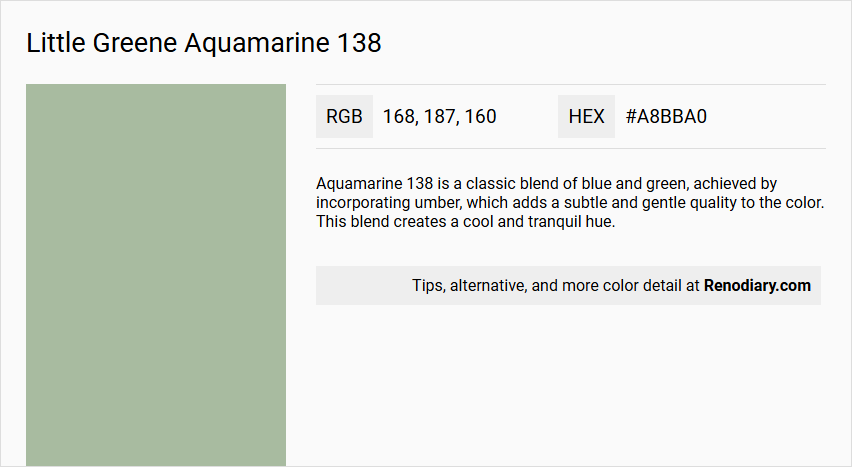
Little Greene Aquamarine 138, with its distinctive RGB composition of 168, 187, and 160, is often identified with the serene, earthy hue known as sage. This color, reminiscent of the soft, muted greens found in nature, carries a calming and sophisticated aesthetic suitable for various interior design applications. Its subtle balance of green and gray undertones makes it versatile, adding a tranquil ambiance to both modern and traditional spaces.
Color Description
Aquamarine 138 is a classic blend of blue and green, achieved by incorporating umber, which adds a subtle and gentle quality to the color. This blend creates a cool and tranquil hue.
Undertones
The color has undertones of blue and green, with the umber adding a slight warmth and depth, preventing the color from feeling too bright or harsh.
Color Values
- Lab values: L* 73.67, a* -7.36, b* 5.09.
- RGB values: 170, 185, 171.
- LRV (Light Reflectance Value): Approximately 43-46.
Usage
Aquamarine 138 is suitable for interior walls and ceilings. It works well within the Aquamarine color family, which includes lighter and darker shades such as Aquamarine Light, Aquamarine Mid, Aquamarine Deep, and Aquamarine Pale. It can be complemented with related whites, neutrals, and coordinating colors like Slaked Lime, Ceviche, and Silt.
Atmosphere
This color brings a gentle coolness and tranquility to a room, creating a soothing and calming atmosphere. It is ideal for spaces where a sense of serenity is desired.
Little Greene Aquamarine 138 Color Alternative
Little Greene Aquamarine 138 has inspired a range of color alternatives that enhance its sophisticated charm in varied lighting conditions. Farrow and Ball Whirlybird 309 and Benjamin Moore Sage Wisdom CSP-775 present complementary tones that maintain the calming essence while introducing unique textural contrasts. Benjamin Moore Salisbury Green HC-139 offers a bold yet balanced option, ensuring that the design remains refined and vibrant regardless of its application.
Bathroom
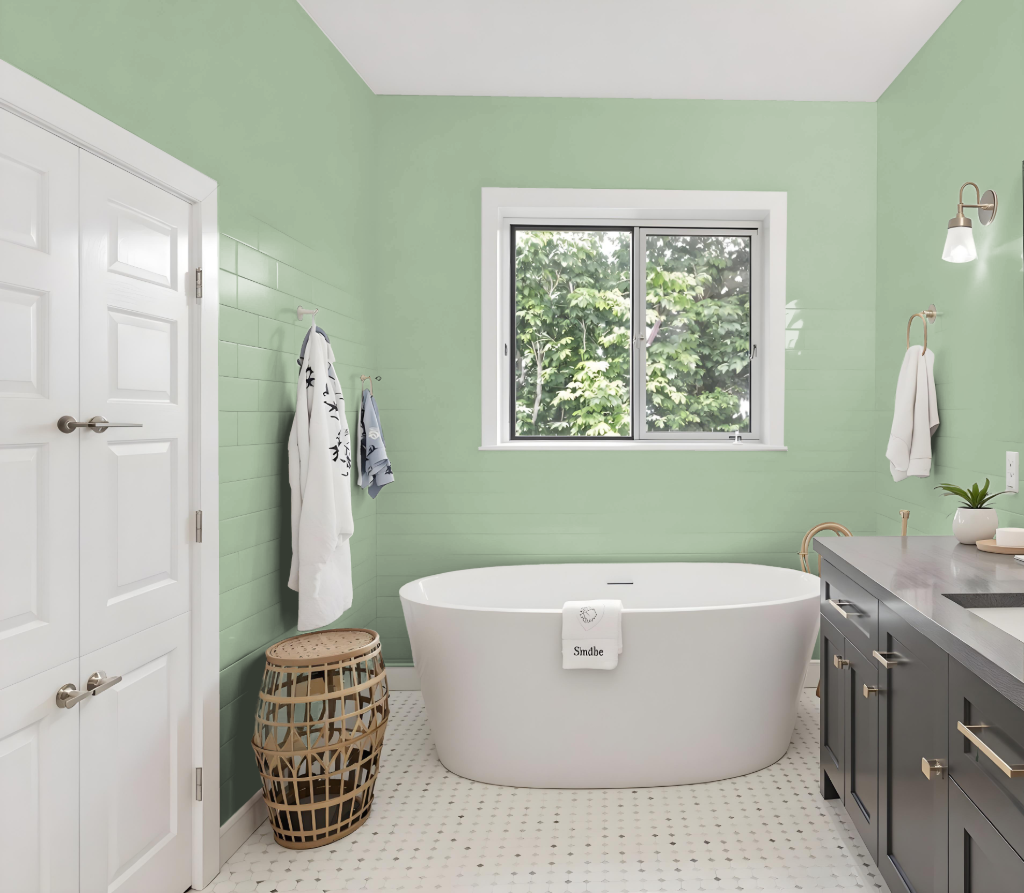
Little Greene Aquamarine 138 is a practical choice for bathroom color, available in finishes that meet high-performance demands in moisture-prone areas. Its matte finish offers excellent durability and washability, making it ideal for spaces with heavy use, while the low-sheen option provides a surface that resists moisture and staining.
For interior woodwork like cabinets and furniture, an additional finish delivers a tough, low-maintenance solution. All finish options are environmentally friendly, child-safe, and formulated with virtually zero VOCs, ensuring a safe and healthy environment throughout the home.
Bedroom
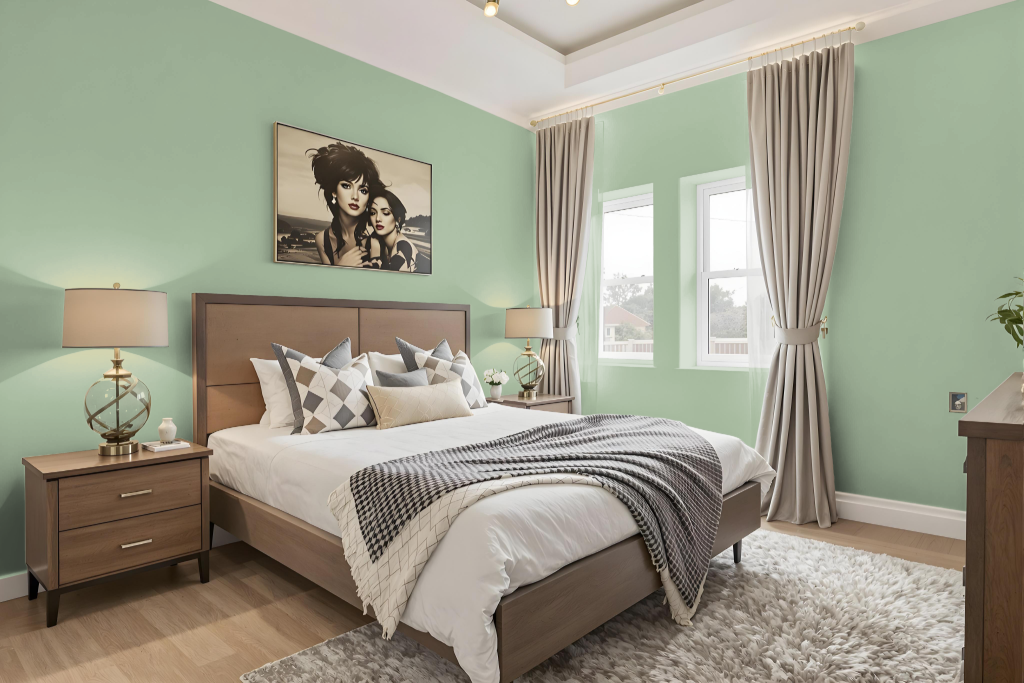
Little Greene Aquamarine 138 is a calming paint color ideal for a bedroom, adding tranquility and style to the space. As a member of a broader Aquamarine family, it sets the stage for a harmonious scheme when paired with complementary shades from its range.
Handmade in the UK, this highly pigmented formula is crafted with minimal environmental impact and offers excellent coverage per liter. It is available in a variety of finishes designed for both interior walls and ceilings, while a selection of coordinated whites and neutrals helps complete the overall design aesthetic.
Kitchen
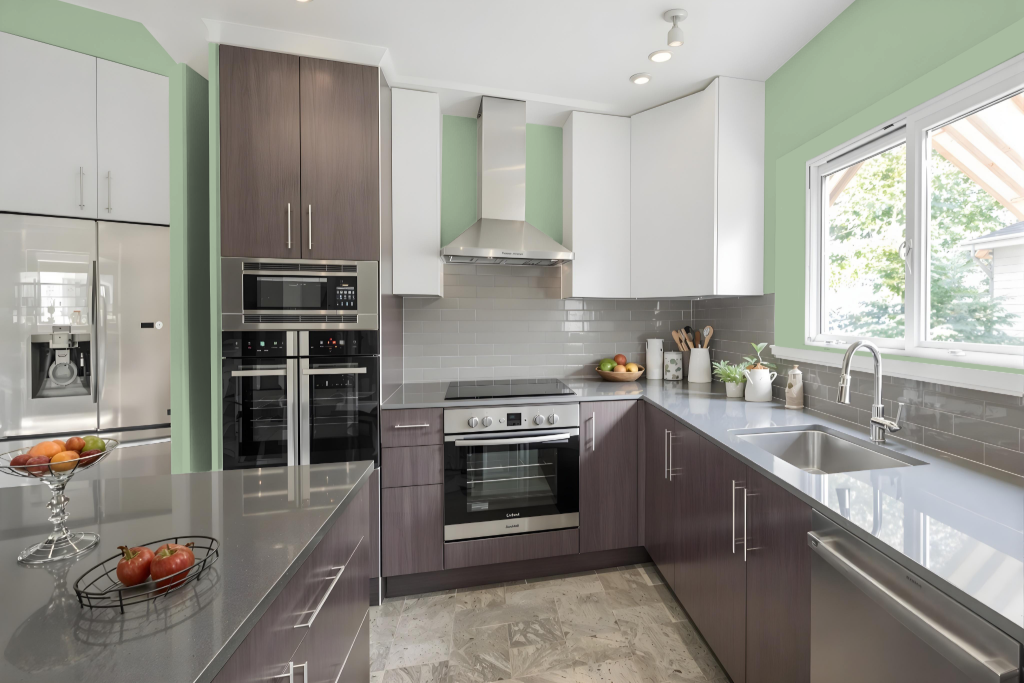
For a kitchen color scheme, Little Greene Aquamarine 138 establishes a bright, inviting foundation that works seamlessly with clean whites, sandy neutrals, and earthy browns. Its cool, tranquil tone is enhanced when combined with warm metallic accents or soft pastels, creating a balanced and refreshing atmosphere perfect for busy kitchen environments.
Durable finish options that resist moisture and wash away easily make the hue ideal for both walls and woodwork. Coordinating hues for cabinetry or accent features, alongside bolder contrasting colors, help tie the overall design together while celebrating the inherent charm and practicality of this distinctive kitchen palette.
Living Room
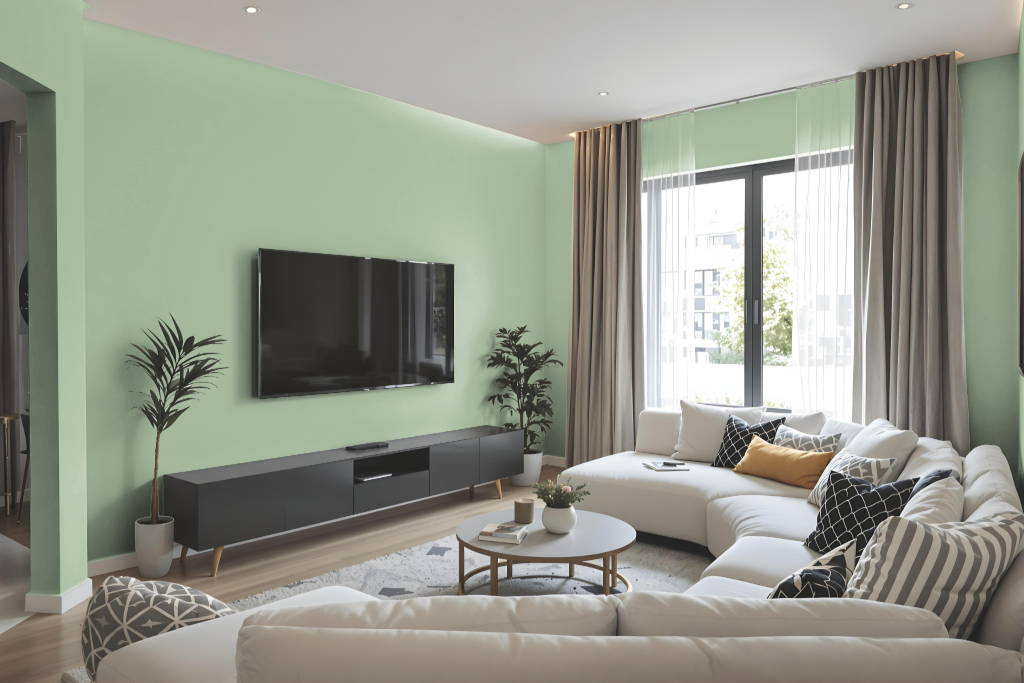
Little Greene Aquamarine 138 makes an excellent living room color, imbuing the space with a calming coolness that balances room energy in busy environments. Its gentle hue creates a tranquil backdrop that lends an inviting feel to the space.
The color harmonizes beautifully when combined with crisp whites, sandy neutrals, and earthy browns, while also allowing contemporary or clean design accents through complementary pairings. Offered in a range of finishes, it adapts well to various interior design needs and high-traffic areas.
Outdoor
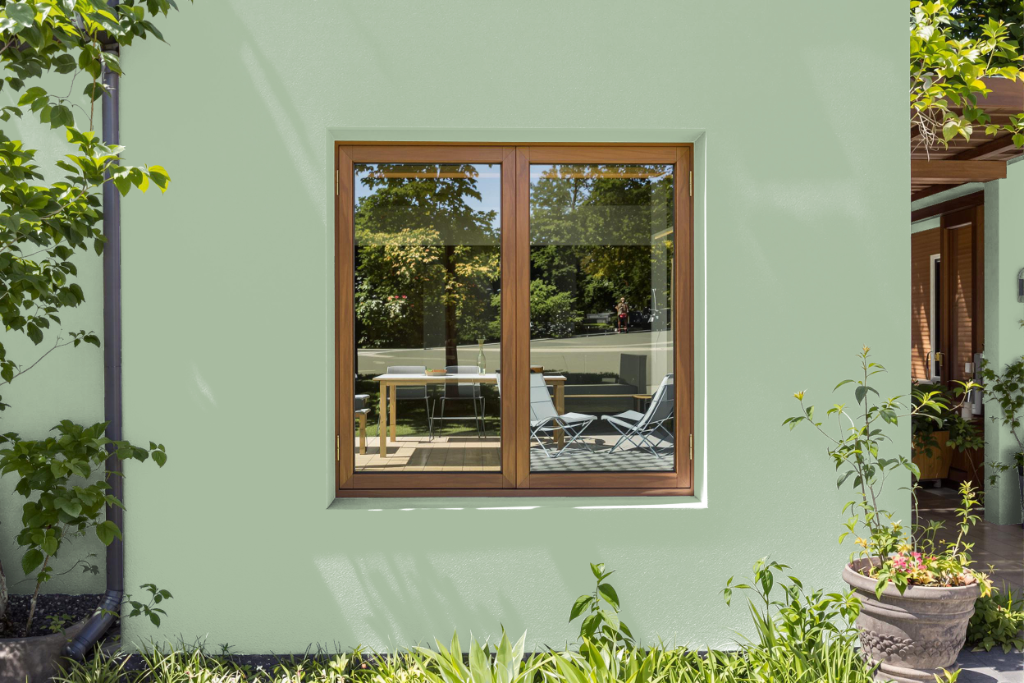
On your home's exterior, Little Greene Aquamarine 138 enhances the outdoor ambiance with its refined appeal. It can be applied using the Intelligent Exterior Eggshell finish, a quick-drying water-based option with a low sheen that suits all exterior woodwork and metalwork while inhibiting mould and algae growth and remaining fully washable and weather-resistant.
Another robust option is the Intelligent Masonry Paint, a 100% acrylic product with a matte finish designed for brickwork, new render, cement blockwork, and even existing paint. Engineered to resist dirt and water and equipped with anti-fungal and anti-ageing technology, it offers enduring performance that can extend up to 15 years before requiring a refresh.
